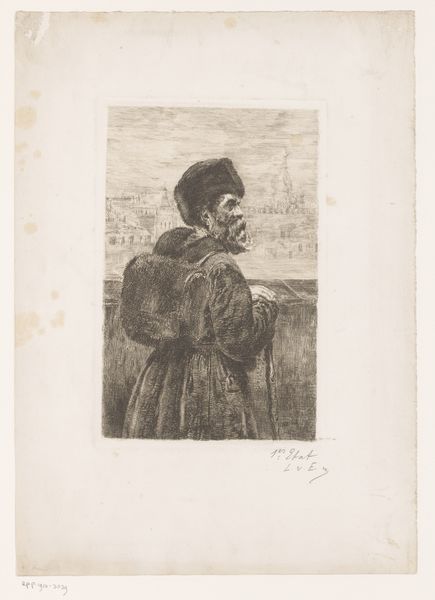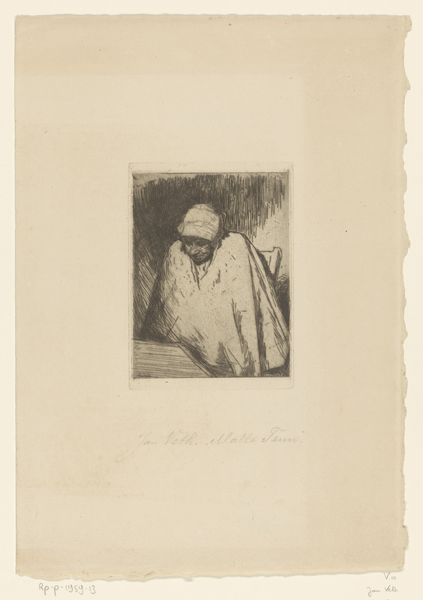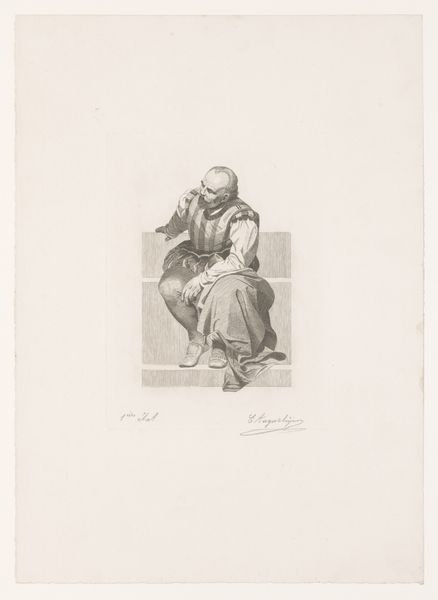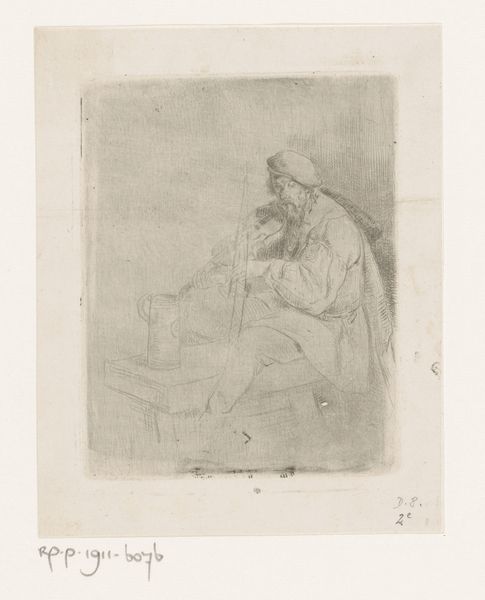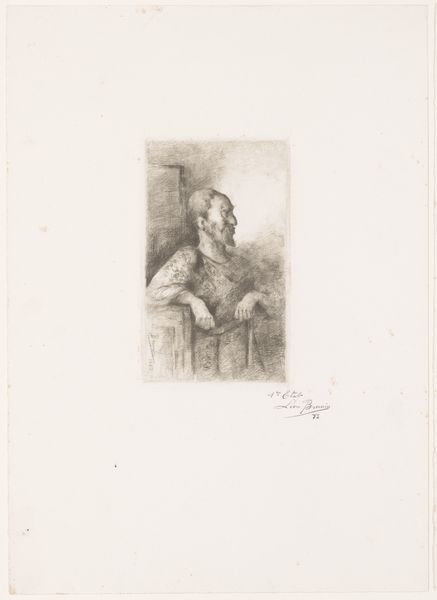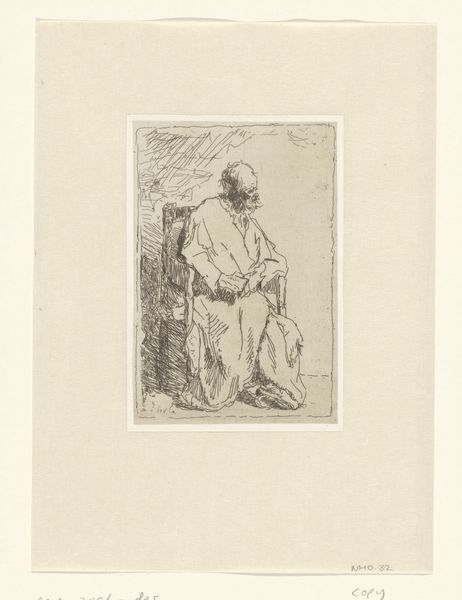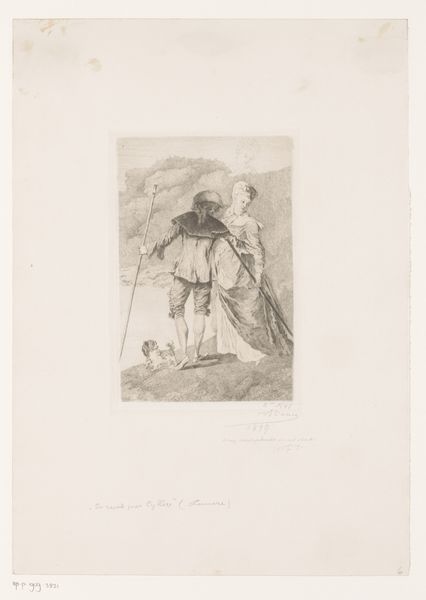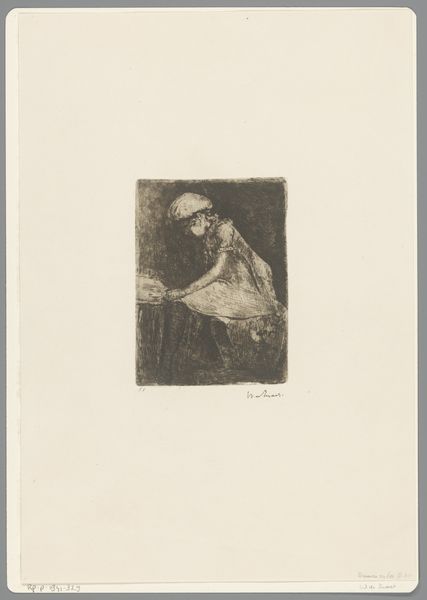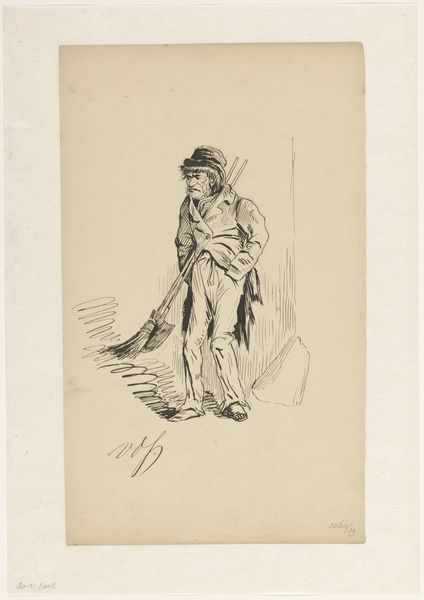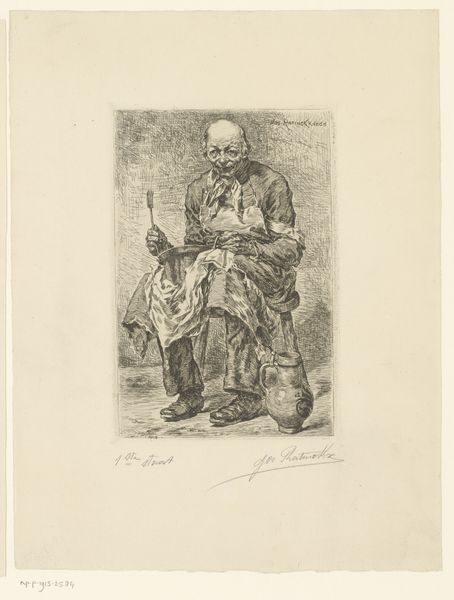
drawing, print, etching, paper
#
portrait
#
drawing
# print
#
etching
#
figuration
#
paper
#
france
#
genre-painting
#
realism
Dimensions: 225 × 170 mm (plate); 345 × 289 mm (sheet)
Copyright: Public Domain
Editor: This is "Beggar with Crutches," an etching by Alphonse Legros from 1881. It’s a small work on paper, a portrait of a man in obvious need. I'm immediately struck by how hauntingly simple it is. The etching focuses on the man, frail and vulnerable. What do you see in this piece? Curator: I see echoes of a recurring figure, a symbol woven through centuries of art. The beggar, often depicted with crutches and outstretched hand, embodies both human suffering and a societal reckoning. He reminds us of mortality and our collective responsibility towards one another. Notice how Legros renders the face – the deep lines etched in his forehead? Editor: Yes, they seem to tell a story all their own. What do these physical details evoke in the viewer? Curator: These are not just lines; they are maps of hardship. The gaze, though averted, speaks of a resignation perhaps, or even a quiet dignity. The empty hat becomes a powerful symbol, a void representing both lack and perhaps the emptiness of societal charity. The crutches? They become more than mere support; they become emblems of vulnerability. Are they supportive, or merely decorative signifiers of a genre painting? Editor: So, it’s more than just a realistic portrayal; it’s imbued with historical and cultural meaning? Curator: Precisely! Legros engages with a tradition of representing the marginalized. It calls into question how we, as viewers and members of society, interpret and respond to such images. The figure invites contemplation of persistent human conditions. It carries centuries of associated burdens, wouldn't you say? Editor: That's fascinating! I never thought about how the depiction of poverty could have such a deep history in art. Curator: It’s a lineage filled with both compassion and exploitation. And that’s why studying it yields valuable lessons about cultural memory. Editor: Definitely gave me a lot to think about! I'll consider this a different lens as I observe people from now on.
Comments
No comments
Be the first to comment and join the conversation on the ultimate creative platform.
